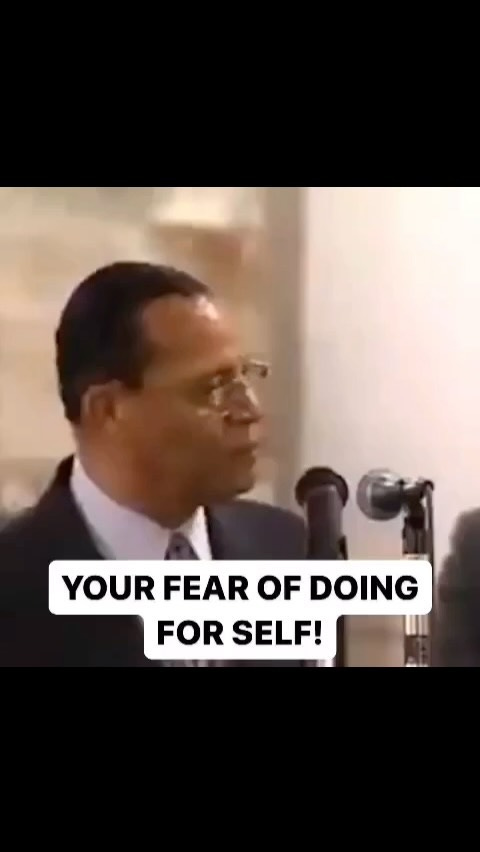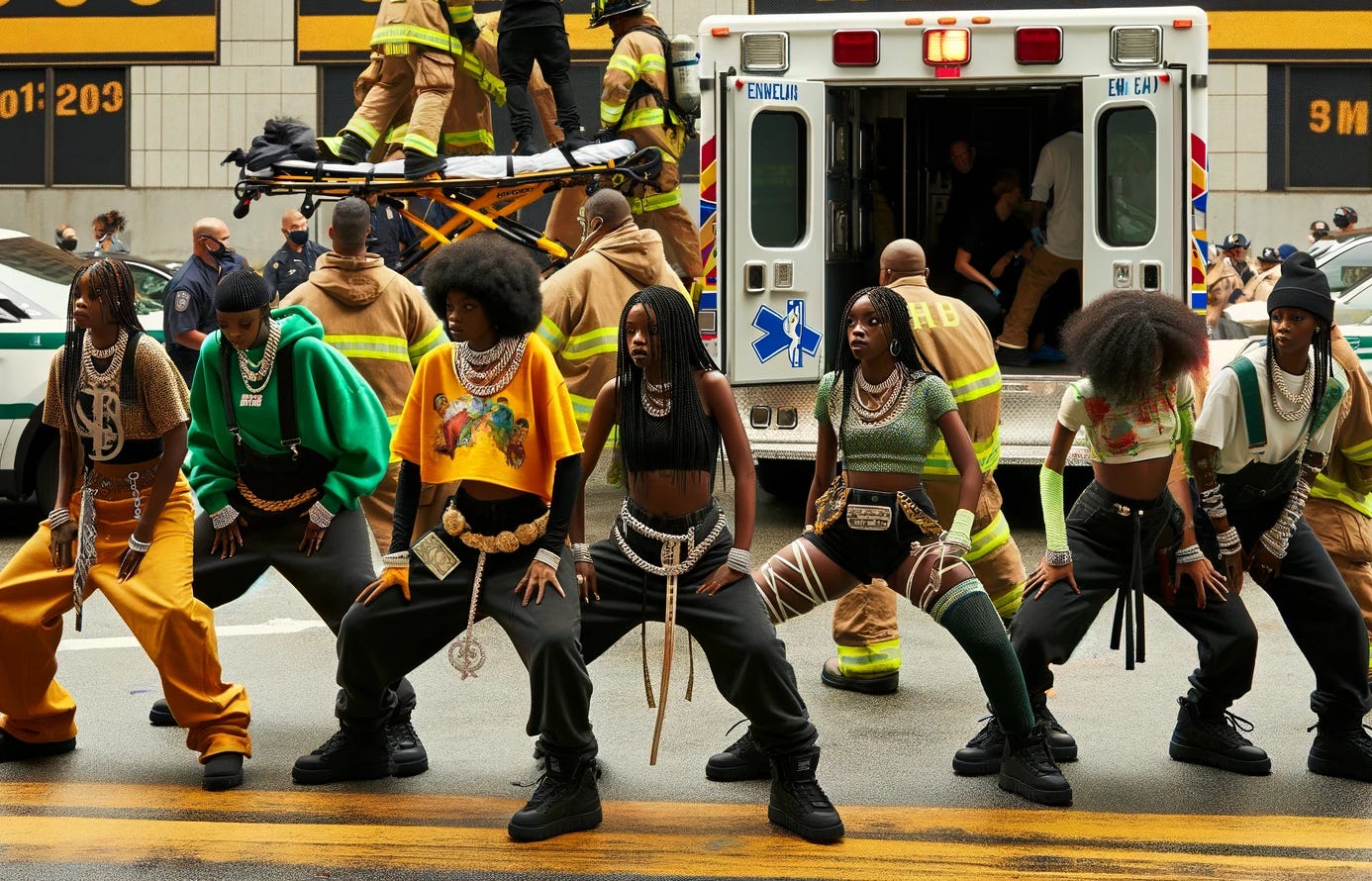Chapter 6 of White Supremacy on Its Deathbed: Let My People Go!
Let's workshop Chapter 6 of my book-length lyrical essay (White Supremacy on Its Deathbed), which aims to promote true black excellence by exposing the harmful implications of mainstream antiracism
Chapter 6. Let My People Go!
[Let my people go!? What?!] Pharaoh has already let you go! But it is you who have not let Pharaoh go! This is why you are crippled! Because you think you cannot walk without your former slave masters. And if your former slave master don’t help you, you don’t think there’s any help for you.—Louis Farrakhan[i]
In the 1980s, people all around America became convinced that day care centers were secretly practicing demonic ritual sex abuse on children. These allegations stayed in the national news for the better part of a decade. Hapless day care workers were falsely convicted of running sex rings. . . . In hindsight, this episode looks absurd. How could anyone have believed that there were Satanic day care centers throughout the country? Yet at the time, many reasonable people were swept up in the delusion—as were the prosecutors and elected officials who promised to put a stop to the fake problem. Such is the nature of moral panics. What looks like obvious absurdity from the outside seems totally reasonable to those on the inside. . . . Since about 2014, we have been facing a new moral panic. . . . White supremacy is said to be rampant. Black people should fear for their lives when going for a jog. . . . This misperception is not only driven by cognitive biases such as the availability heuristic, it is also driven by ideas. Critical race theory and intersectionality—formerly confined to graduate seminars—have seeped into corporate America and Silicon Valley, as well as into many K–12 education systems. With their spread has come an increase in the misperception that bigotry is everywhere, even as the data tell a different story: racism exists, but there has never been less racism than there is now. If America’s racial tensions ever heal, it will be because we were able to align our perceptions with our reality and leave moral panics at the door.—Coleman Hughes[ii]
So, in summary, what might white supremacy do from its deathbed to insinuate itself into the fabric of one of the least racist societies ever on Earth, to infiltrate perhaps even the highest echelons of power, so that it may recommence the destructive torture of black kind—what might it do at a time when it would seem to have no chance: a time (enamored of blackness) where black Americans have ascended to the highest levels of society, politics, business, arts, culture; a time (sick of whiteness) where institutions bend over backwards to signal the wokest credentials, even to the point of pathologizing whiteness and discriminating against white applicants?
It could just sit back and revel in our world where (1) music is the best molder of minds and identities (especially young minds and identities) and (2) hip-hop is the dominant music and (3) hip-hop is itself—not just in lyrics but in the way rapper “role models” carry themselves in real life (arrested for guns and drugs, twerking in jezebel attire of objectification, leaking porno videos of the Botoxed caricatures into which they have made themselves)—is a culture dominated by celebrations of hypersexuality and hyperviolence and hyper-drug-use and hyper-brainless-consumerism: the very dehumanizing stereotypes of past centuries now largely seen as aspirational and sometimes even, Stockholm-style, construed by blacks as liberating.
It could just sit back and revel in our world where blacks are incentivized (by a variety of special perks) (1) to view themselves primarily through the agency-sapping lens of perennial victimhood (victimhood at the hands of an indelible agenda against them) and (2) to find their primary means of advancing through highlighting past and present injustices (rather than through personal achievement and resilience) and (3) to attribute success to external boosts (rather than to personal effort and capability), an incentivization that—especially with the help of more and more institutions treating them as so pathetically fragile that they require (even in university classrooms) spaces safe even from potentially unsettling words—grooms them into unchallenged spoiled leaners who remain disempowered and always expecting of aid and set up for incompetence-stereotype-reinforcing failure (especially when thrown, “with helping hands,” into positions for which they are not fully prepared): unable to see the ways in which they are responsible for their own failures and misconduct; unable to see, let alone to reflect upon and fix, the internal causes of their deficiency across various metrics—causes like, in general, the cultural attitude of romanticizing victimhood or of vilifying educational success as “acting white” or of glorifying thuggery and whorishness (and, in particular, preventing EMT workers from gurneying the numerous black-on-black bodies “drilled the fuck up” by twerking all around and on top of ambulances in front of mount-positioned thugs).
It could just sit back and revel in our world where the call to agency and resilience and self-examination and self-improvement (the path of genuine black power, the path of eradicating degrading stereotypes, the path of preserving the principle of meritocracy) gets maligned as “a cruel form of victim blaming” of “a radically oppressed people who deserve special boosts”—“a cruel form of victim blaming that allows to go unchecked the beast of white supremacy: the institutional source of black failings that must be addressed before anything else” because, after all, “the nice-sounding solution of ‘focus on how you can lift yourselves up’ only makes sense once the glass ceiling has been shattered.”
It could just sit back and revel in our world where, reinforcing racial categories just like white supremacists of yesteryear did (only, however, in the name of addressing racial injustices), the antiracist movement (1) exaggerates the extent of white supremacy’s influence in contemporary society (finding it in the most absurd places) and (2) creates “whiteness” into a mythical source of all injustice (a contagious disease that can only be held in check but never cured and that whites are expected to grovel in atonement for, a moral pathology that carries out its antiblack machinations even through the most well-intentioned and self-censoring white allies who express self-flagellating shame for the harms of which they like their ancestors are culpable) and (3) pushes policies that focus on race instead of on individual need or merit or character—these points coming together to perpetuate, especially with the help of the divisive notion that discrimination can only be righted through counter discrimination, a punitive cycle of racial vilification: bitter overreach met with bitter overreach that then justifies more bitter overreach and so on (all in a race-obsessed twilight zone of empathy and dialogue as withered as our ability to see ourselves as more than mere embodiments of racial identity).
It could just sit back and revel in our world where the biggest threat to goodwill between whites and blacks is the various things done in the name of an “anti-nazi commitment to inclusion and equity”; where the biggest threat to reversing all the progress we have made to changing the white-supremacist attitude about the place and purpose of black people (the attitude attendant to the use of black people as slaves) is the claim that “from the time of legal emancipation until now there has not been even the slightest change in that attitude (however much that attitude might be cloaked)”; where the biggest inciter of individual racism (on both sides) is all that keeps being done to fight a systemic racism long ago put into remission; where the biggest threat to black people is the various things done in the name of an “antiracist movement to redress black oppression”—indeed, where the best evidence for the lie that white supremacy continues to have a pervasive grip over this country are the various things done in the respectable (and big-money) name of “dismantling white supremacy.”
Acknowledgements
Thank you to My Dad, Michael A. Istvan III, Aaliyah Fritz, Madisun Miller, Ray Bru, Chris Cimmino, Albert Aliano, Mike Shaw, Glenn Loury, Shelby Steele, John McWhorter, Bianca Monique, Tom MacDonald, Adam Calhoun, Burden, Mesus, Kali Fontanilla, Roland Fryer, Sean Croxton <more to come in later drafts>
[ii] https://manhattan.institute/article/the-social-construction-of-racism-in-the-united-states








